

TOP > Divine Master Tenrai Hayashima Journey: In Search of Taoism (2)

In Searching of Taoism: Nihon Dokan members offer prayers at China’s White Cloud Monastery and take the Silk Road
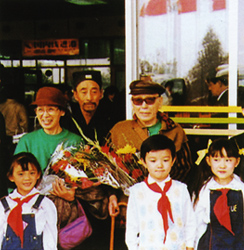
White Cloud Monastery
Beijing’s White Cloud Monastery was built by Chong Chun Zi, founder of the Lung Men (Dragon Gate) school of Taoism in 1227 during the Yuan dynasty.
Since then it has been the main seat of the Quanzhen School of Taoism. In its heyday it was a large compound with 50 places of worship of various sizes, covering 6,600 square meters of land to which novices from all over China flocked to undergo strict training.
Divine Master Tenrai Hayashima visited White Cloud Monastery with his disciples in October, 1991. It was his second visit, and he was already well known as the founder of Nihon Dokan and was received with a VIP’s welcome. He was greeted with the Ceremony of Opening Light which is only used for messengers from the Emperor in heaven.
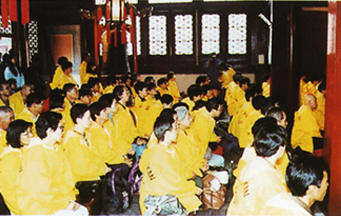
 Received with the Ceremony of Opening Light
Received with the Ceremony of Opening Light
at the White Cloud Monastery
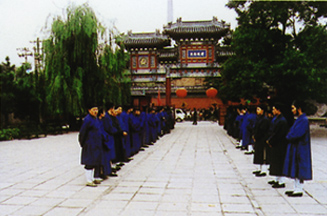
 Chinese Taoists welcome Divine Master Tenrai
Chinese Taoists welcome Divine Master Tenrai
Hayashima
The White Cloud Monastery remains an important seat of faith for the Chinese people. January 19, according to the old Chinese calendar, is the day when the spirits of the sages descend, and the monastery is packed with men and women praying for further enlightenment on their Taoist Way.? The White Cloud Monastery is the official headquarters of the Chinese Taoist Association.
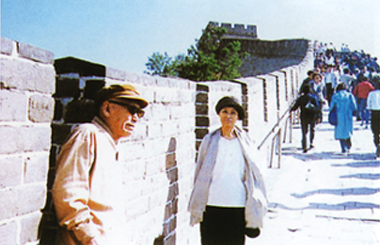
 At the Great Wall of China
At the Great Wall of China
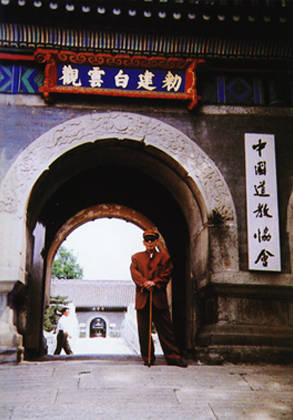
 The Wwite Cloud Monastery,
The Wwite Cloud Monastery,
central to Chinese Taoism
Dunhuang
After visiting the White Cloud Monastery in Beijing, Divine Master Tenrai Hayashima travelled through Urumqui, capital of the Xinjiang Uyghur Autonomous Region, then to Dunhuang, the city in the oasis. The divine master’s group attended a wedding which, according to the local tradition, starts beneath grapevines. They then moved onto to the Jiahegucheng ruins and the Bezelit Thousand Buddha Caves.
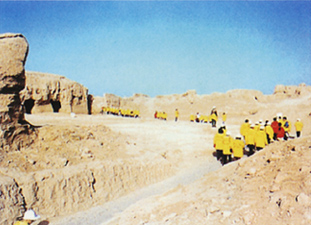
 Participating in a wedding at the Jiahengucheng ruins
Participating in a wedding at the Jiahengucheng ruins
on the outskirts of Turfan
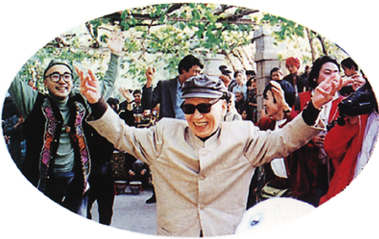
 A wedding that begins beneath grape vines
A wedding that begins beneath grape vines
Dunhuang
Dunhuang, world famous for its Mogao or Dunhuang Caves, was once the gateway to the West and flourished as a crossroads of eastern and western cultures. Dunhuang played a major role in Taoist history with several Taoist monasteries existing during the Tang dynasty, and Taoist texts have been found in the caves. Many episodes reminded us of the Silk Road traders on camels: the Mingha Mountain with its great expanse of desert, the Crescent Lake in the valley, the Jiahegucheng ruins and the wedding beneath the grape vines.
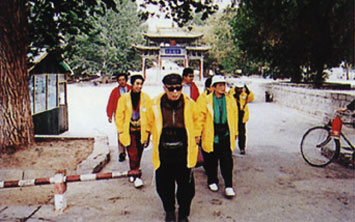
 Returning to the Dunhuang Caves
Returning to the Dunhuang Caves
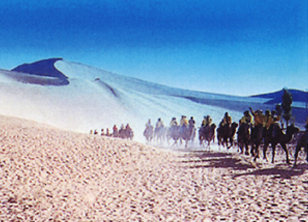
 A Nicon Dokan member rides a camel.
A Nicon Dokan member rides a camel.
Lanzhou
Lanzhou lies on the banks of the great Yellow River. During the Silk Road era it was a hub for people journeying west from Changan. However in modern times it is better known as an industrial city.
Divine Master Tenrai Hayashima offered prayers at the White Cloud Monastery in Lanzhou then flew back to Beijing. He received a rapturous welcome at the Great Wall of China and the White Cloud Monastery. He visited sites including the 13 Tombs of the Ming Dynasty and concluded his trip.
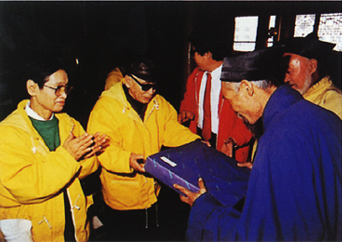
 A Rapturous welcome at the White Cloud Monastery
A Rapturous welcome at the White Cloud Monastery
in Lanzhou
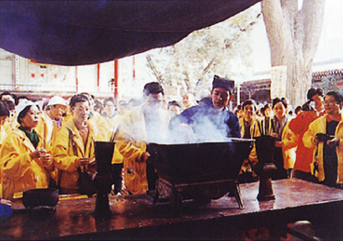
 Nihon Dokan members offering prayers at the White Cloud
Nihon Dokan members offering prayers at the White Cloud
Monastery in Lanzhou







